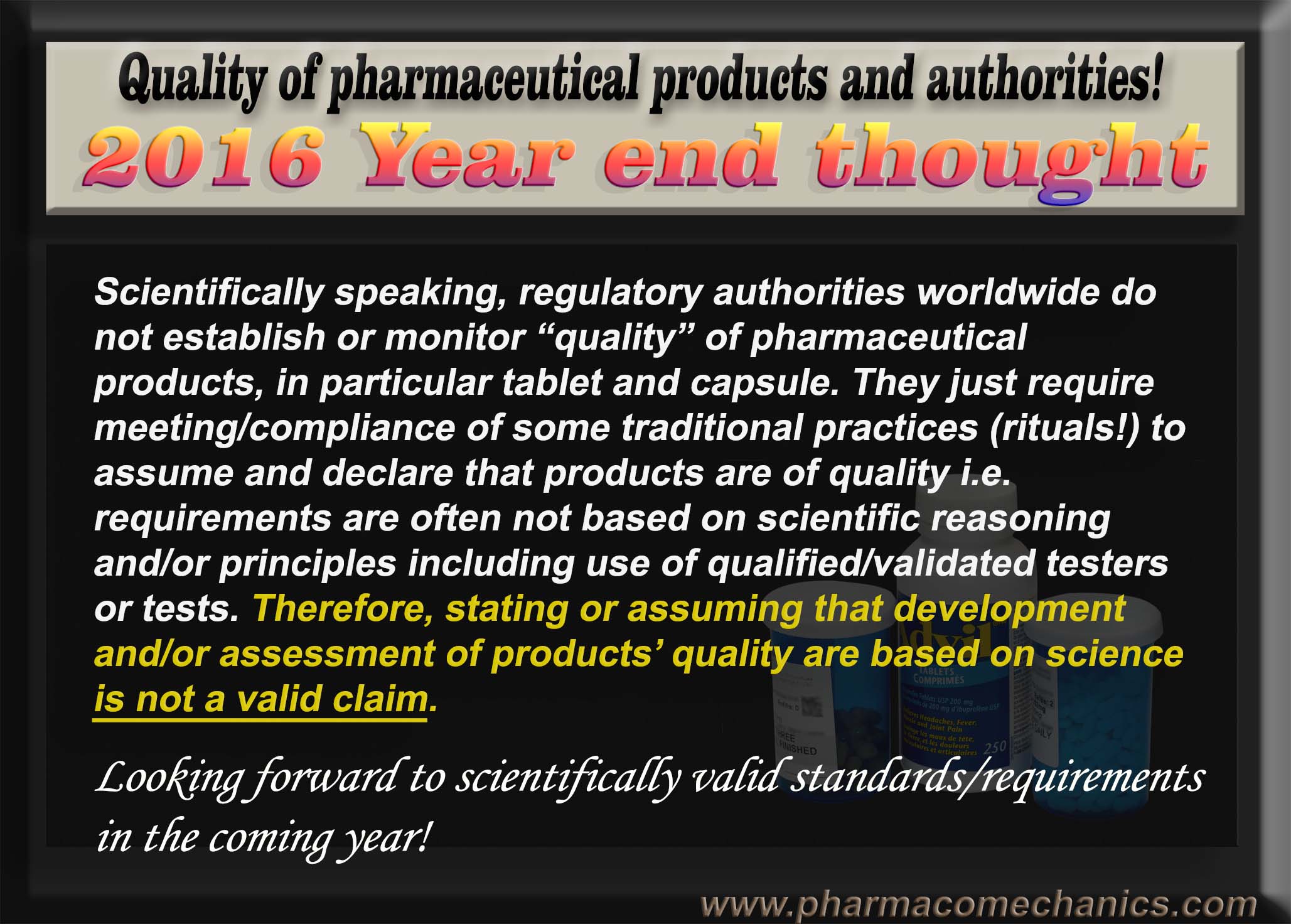Monthly Archives: December 2016
Year End Thought on Quality of Pharmaceuticals
My recent presenatation
Last month I gave a seminar in Lahore, Pakistan organized by the Pakistan Pharmaceutical Manufacturers’ Association (PPMA). A copy of the presentation (slides) is attached (link). If you have any comments and/or questions, please do not hesitate to contact/write me at moderator@drug-dissolution-testing.com
Some suggested rationales for using a non-compendial dissolution tester and/or method
There are a number of reasons where one can use, in fact should use, non-compendial testers and methods, e.g. when currently recommended compendial testers/methods are:
- Unable to determine dissolution characteristics of a blinded sample, a common and standard practice/requirement for any analytical test.
- The usefulness (validity) of the tester/method is in question i.e. a tester/method is not capable of determining and differentiating dissolution characteristics of products. For example, they are unable to differentiate between immediate- and extended-release products having the same active ingredient.
- The underlying science is weak or invalid e.g. the test method is product dependent. It is a serious scientific violation that the method used is product dependent.
- Complex and time consuming.
At present, pharmacopeial testers/methods are deficient in all the above mentioned characteristics/requirements. Therefore, if a newer approach addresses any or all of the above mentioned deficiencies then automatically the new or modified tester/method becomes superior and should be used. People should focus on addressing and improving on the current methods and pro-actively suggest newer methods to the agencies. Analysts/scientists should give no consideration to views that only pharmacopeial testers/methods should be employed to avoid potential delays in product approval. It is much better to spend some extra time up front to have a scientifically valid and robust method than using the recommended method/approach which is flawed as it will cost a lot more during production cycles, failures (OOS), recall, etc.
It is important to note that modified testers/methods should be suggested at the stage of product application, where it would be relatively easier to be accepted. It is highly unlikely to change at the production or plant inspection stage, as specifications are part of the “contract” which are very difficult, or impossible, to change.
The Crescent-shape spindle (link) has been suggested for drug dissolution testing to address the deficiencies of the currently recommended apparatuses and methods. In addition, its use significantly reduces work-load, thus increasing efficiency and cost savings.


